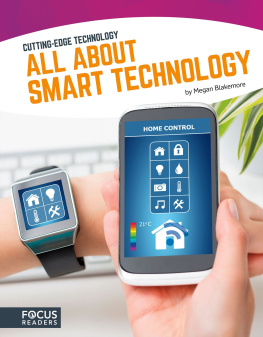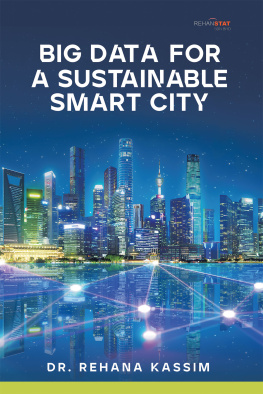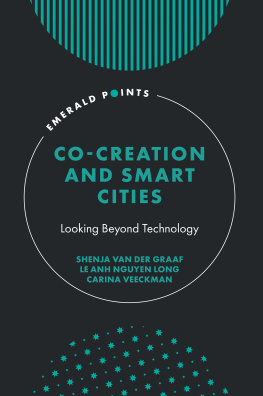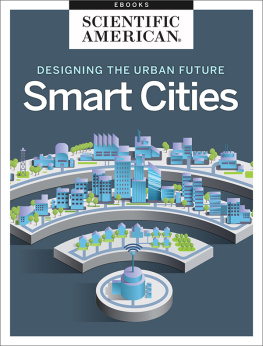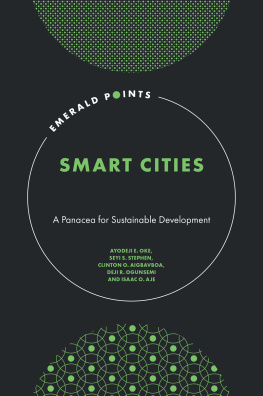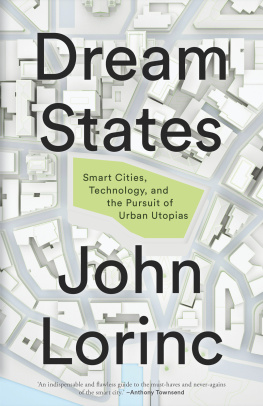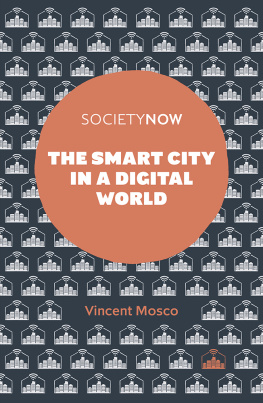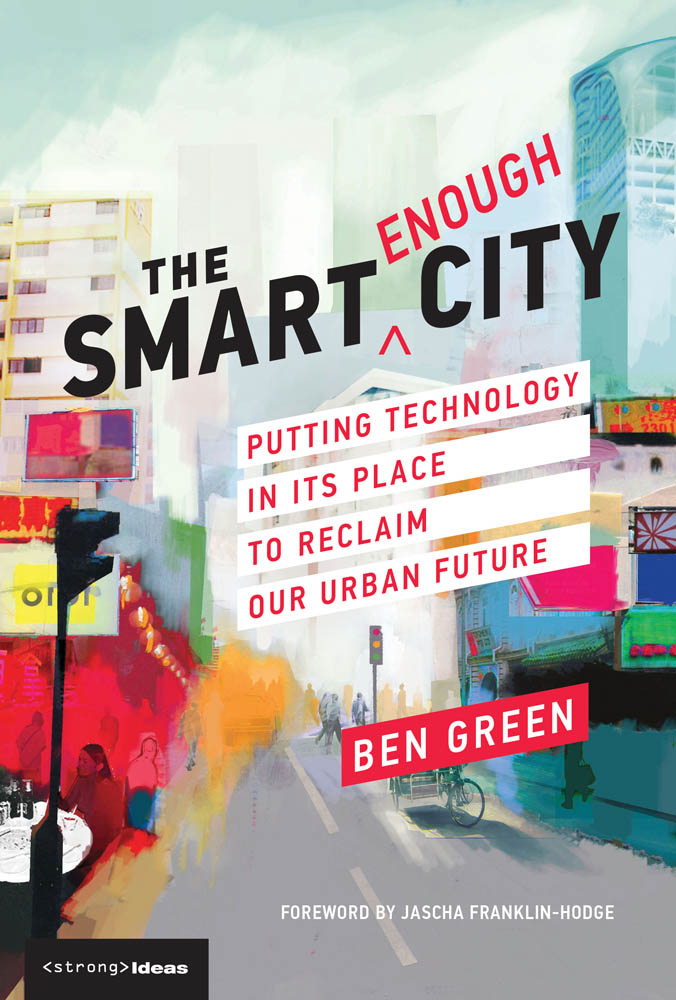
The Smart Enough City
Ideas Series
Edited by David Weinberger
The Ideas Series explores the latest ideas about how technology is affecting culture, business, science, and everyday life. Written for general readers by leading technology thinkers and makers, books in this series advance provocative hypotheses about the meaning of new technologies for contemporary society.
The Ideas Series is published with the generous support of the MIT Libraries.
Hacking Life: Systematized Living and Its Discontents, Joseph M. Reagle, Jr.
The Smart Enough City: Putting Technology in Its Place to Reclaim Our Urban Future, Ben Green
The Smart Enough City
Putting Technology in Its Place to Reclaim Our Urban Future
Ben Green
The MIT Press
Cambridge, Massachusetts
London, England
2019 Massachusetts Institute of Technology
All rights reserved. No part of this book may be reproduced in any form by any electronic or mechanical means (including photocopying, recording, or information storage and retrieval) without permission in writing from the publisher.
Library of Congress Cataloging-in-Publication Data is available.
ISBN: 978-0-262-03967-3
Retail e-ISBN: 978-0-262-35225-3
Library e-ISBN: 978-0-262-35224-6
MITP e-ISBN: 978-0-262-35223-9
d_r0
For Pop and Mom
Contents
The age of the Smart City is upon us! Its just that, we dont really know what that means. Or, at least, not yet.
The Boston Smart City Playbook (2016)
As chief information officer of the City of Boston from 2014 to 2018, I sat through many pitches from companies selling smart cities technology. A memorable one came from two Fortune 500 companies who had partnered to offer a connected device that would sit on top of our streetlights and provide cameras, sensors, and computing capabilities at tens of thousands of locations across Boston.
Like most smart cities products, it was pitched as a platform that would capture many kinds of data and, with the right analytical models, enable us to improve everything from traffic flow to public safety to the efficiency of city services.
A colleague asked the assembled vendors whether any of these benefits had actually been realized in practice, to which one of the company division heads enthusiastically replied, Thats the exciting part about it: we give you the platform and the data and you get to figure out all the ways you can get value from it. The kicker came when we asked about price, and learned that annual service costs alone were almost as much as the city spends on snow removal and trash collection combined. Not a proposal that I was going to rush down to the mayors office.
The experience highlighted a common gap in the world of the smart city. Companies see possibilities (and dollar signs), while municipal employees see hard financial trade-offs and a complicated path to translate technology into real public value. Moreover, it illustrates a fundamental difference in how people see the challenges facing cities. To technologists, cities are a collection of straightforward optimization problems for which more data and computing power can only be helpfulwho could argue with making traffic flow better and delivering services more efficiently?
But to those on the front lines, words like better and more efficient are the tip of an iceberg, below which sit the competing interests and conflicting values of the city and the people who live in it. Even a simple concept like improving traffic flow quickly breaks down into thorny questions of priority and perspective: Should we automatically give a green light to a bus approaching an intersection, even if doing so slows down other drivers? Is it fair to retail businesses to take away street parking for an Uber pickup zone? Should we use predictive signal timing to speed up traffic if that might make roads less safe for people who walk and bike? These are not technical questions, and no amount of sensor data can provide the right answer.
When I joined Boston City Hall after ten years running a technology company that I founded, I learned quickly that sentences which began with Couldnt we just... often ended with my foot in my mouth. People who had worked with a problem for years often schooled me in the complex political and structural challenges at the heart of issues that seemed on the surface to be fixable with a small splash of tech wizardry. The tendency to overlook deeper questions of values and trade-offsin favor of a reductive, solutionist approachis one of the blind spots of many technologists.
The Smart Enough City dives deep into the opportunity and challenge of applying technological solutions to the very human-centric world of urban governance. Ben Green articulates the incredible promise that new technologies offer cities, while embracing the complications and complexity that they bring in implementation. By rejecting the tech-centric thinking that undergirds many smart cities concepts, he shows us how to avoid the trap of seemingly simple solutions to wicked problems.
Ben also posits a new role for the practitioners of technology in government, one that he modeled in his time working with the City of Boston. In his year as a data scientist with my team at the Department of Innovation and Technology, Ben was a thought partner on the role of innovation and the thorny complexity of its impacts on city residents. On topics spanning public Wi-Fi to sidewalk repairs, he helped the city carefully weave the values and priorities of our community into the application of exciting new technology. And in his hands-on work with city departments, he pushed beyond the false promise of superficial optimization and zero-trade-off improvements.
As someone with deep data science skills, Ben was asked to support Boston Emergency Medical Services (EMS) in addressing a troubling increase in ambulance response times. His approach was one of inquiry. He analyzed data about usage trends, call types, and ambulance geography. As importantly, he built relationships with EMS leadership and paramedics on the ground. An ambulance ride-along put a human face on the patients being served and offered context on the factors that influence response time. Modeling data alongside the people whose work it represented led to some impactful insights.
He was able to show how and where ambulance capacity had failed to keep up with demand, and his thoughtful analysis uncovered opportunities to improve the EMS service model. A significant amount of ambulance time was used by nonmedical emergency calls for people struggling with homelessness, drug addiction, or both. EMS responders were acting as de facto social service providersa critically important function, but not one best performed by paramedics on a fully equipped ambulance.
Bens people-focused, collaborative approach led to the creation of an EMS Community Assistance Team that works with substance abuse and outreach workers to connect people in crisis to social services. Responders with special training and resources were able to offer better care and support, while freeing up ambulance units for calls that required their unique skills and equipment.
The Smart Enough City busts the myth of the swashbuckling urban innovator reshaping the city with the simple magic of disruptive technology. It offers both a warning and a road map to those who make it their business to make cities smarter. Technologists can have big positive impacts on cities only by marrying deep technical skills with careful program design and an empathetic embrace of the complexity and contradictions of city life. For those of us optimistic about the potential to develop new solutions to long-standing urban challenges, this book brings an important new voice and a thoughtful path forward.
Next page


